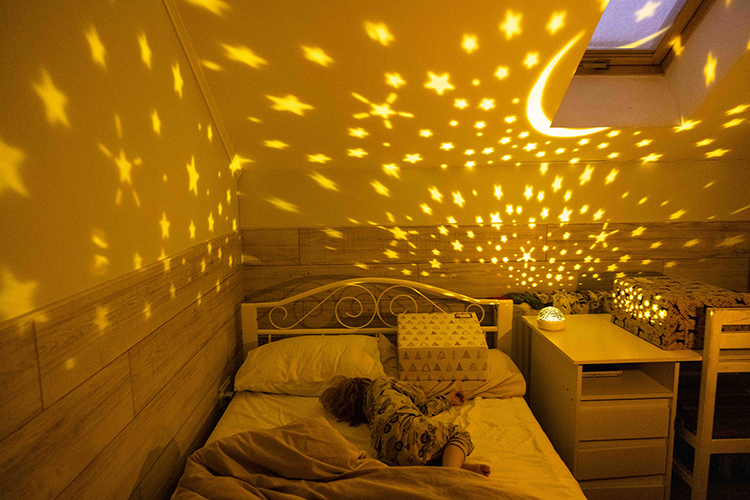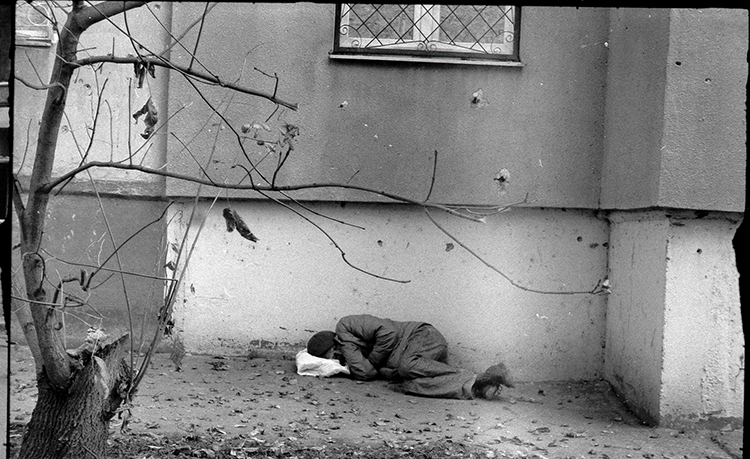Ukrainian photographer Stanislav Ostrous spoke about shooting in the coastal areas of Kherson, which are attacked by drones every day, about the only resident of Portova Street, and about feeling at home in a city where fewer and fewer people remain.

“Kherson is my home”
“Local photographers don't go to the areas of Kherson near the Dnipro River — it's too dangerous. It's a red zone where many civilians have already been killed. I was lucky to get there during the Easter holidays for just half a day with local volunteers,” says photographer Stanislav Ostrous.


He lived in Kherson for more than twenty-five years, and returned to the city for the first time after the full-scale Russian invasion in March 2024. Together with Lithuanian photographer and curator Darius Vaičekauskas, Stas is working on a book about pre-war life in Kherson and continues to photograph the city after the start of the Russian invasion.

“I periodically visit Kherson, walk the streets, talk to people, take photographs, and collect stories,” says Stas. ”Last year, I even filmed in Antonivka, which is located close to the combat zone. Currently, only volunteers who are evacuating people are traveling there.”



"This time, it was very difficult to film in Kherson — there was a constant threat of shelling and massive drone strikes. The drones fly there in flocks and attack everything they see. They hover over the streets and hunt people — they don't care if they are women or children. The greatest danger is in the areas along the Dnipro River, from which almost all residents have fled."
Kherson resembles a large fan with its wide side facing the Dnipro River. The city's central pedestrian street has become a kind of border, south of which public transport does not run and local residents do not go.

"I accidentally ran into some old acquaintances who were on business in the Slavyansky Park area near the Dnipro River. They drove me there, and I had the opportunity to walk along familiar streets,” says Stanislav Ostrous. ‘I took a photo of the Fregat Hotel, located right on the waterfront. Now it's surrounded by nothing but wasteland.’
Almost no one lives in the coastal areas of Kherson today. This is a huge blow to a city located on the river. Near Portova Street, Stanislav Ostrous met its only resident, Oleksandr Zhurba. The man of retirement age remains in the dangerous area because he has lived there all his life, and it is his home. This is a serious motivation.

Photo by Stanislav Ostrous
“There is still a boiler room operating in this area, which heats Alexander Zhurba's house. Imagine that — people are working to provide heat for a few residents of the neighborhood. I really admire them,” says the photographer.



Stanislav Ostrous usually stays with friends when he visits Kherson. This time, just a few days before his arrival, his good friend Oleg Degusarov and his team of volunteers came under fire when their car was attacked by a drone.
“Oleg was wounded and is now in a Kyiv hospital undergoing rehabilitation. One of the team members, a young man, was killed,” says Stanislav Ostrous.

Photo by Stanislav Ostrous

"When you're taking photos in the red zone, your adrenaline is pumping. I only used one film camera, even though I had two others with me. I didn't take a single duplicate shot. I was in a hurry. Firstly, I didn't want to let down the volunteers who were waiting for me by the car, and secondly, I already had tickets for a train that was leaving in a few hours. All the way home to Kharkiv, I was worried that nothing had worked out,” smiles Stas Ostrous.
“Kherson is my pain”
The streets of Kherson in the photographs are empty and deserted, just as they are in real life.
"In the residential areas of the city, located far from the Dnipro River, and in the center of Kherson, life is still flickering, and at 11 a.m., it is simply boiling. Supermarkets and food markets are open, grandmothers sell flowers on the streets, and public transport runs, albeit only to the center. Unlike last year, the streets look clean and tidy, with flower beds everywhere and lilacs in full bloom. It seems as if there is no war at all,” says Ostrous. ‘However, as soon as you leave the center and head south, you find yourself in a wasteland. Only dogs run through the streets, and they can form packs that are dangerous to people.’


After lunch, a sense of apocalypse descends on the entire city. After three o'clock, people disperse to their neighborhoods and lock themselves in their homes. Stanislav says that no more than 20 percent of the city's pre-war population remains.
"I saw a few pedestrians even near Slavy Park, located right next to the Dnipro embankment. However, the shelling there is very intense and it is practically impossible to take photographs. At the end of 2024, intense drone attacks were added to the artillery and mortar shelling. You can constantly hear automatic gunfire — our military is shooting down drones. The war is very close there,” says the photographer.

Kherson is the only large Ukrainian city that was occupied and then liberated. Many of Stas's friends and acquaintances survived the Russian occupation.
“When my friends and acquaintances feel trusted, they willingly share their stories and emotions. One of my volunteer friends said that Russians can only get the first three letters of the city's name, not Kherson,” says Stanislav Ostrous with a smile. “The people of Kherson continue to love their city and remain here to live.”

For example, naive artist Oleksandr Zhukovsky, who now makes sculptures out of soil, reevaluated his relationship with the land after the occupation. He makes eggs out of a special mixture of soil, adding a handful of seeds. When the sculpture cracks, the seeds sprout and his work becomes the beginning of new life.
"It is important for me to record the changes taking place in the city. Kherson is an important stage in my life, part of my life. All my children were born there, I have a home there, my only home. I still think of the place I bought as my home, where I felt good,” says the photographer. ”Kherson is a very nice and cozy city, beautiful and cool in its own way. The city was raped, and now they continue to destroy it and wipe it off the face of the earth. Kherson is my personal pain and tragedy."
Stanislav Ostrous was born in 1972 in Zhmerynka, Ukraine. He began taking photographs in 2012. He is a member of UPHA (Ukrainian Photographic Alternative) and MYPH. He participated in the main exhibition of the Batumi Photodays festival (2016–2019). He was shortlisted for PhotoCULT 2019. He currently lives and works in Kherson, Ukraine.
Photographer's social media: Instagram and Facebook
Contributors:
Researcher and author: Katya Moskalyuk
Image editor: Olga Kovaleva
Literary editor: Yulia Futey
Website manager: Vladislav Kukhar




%20(750%20x%20360%20%D0%BF%D1%96%D0%BA%D1%81.)%20(3).png)

















